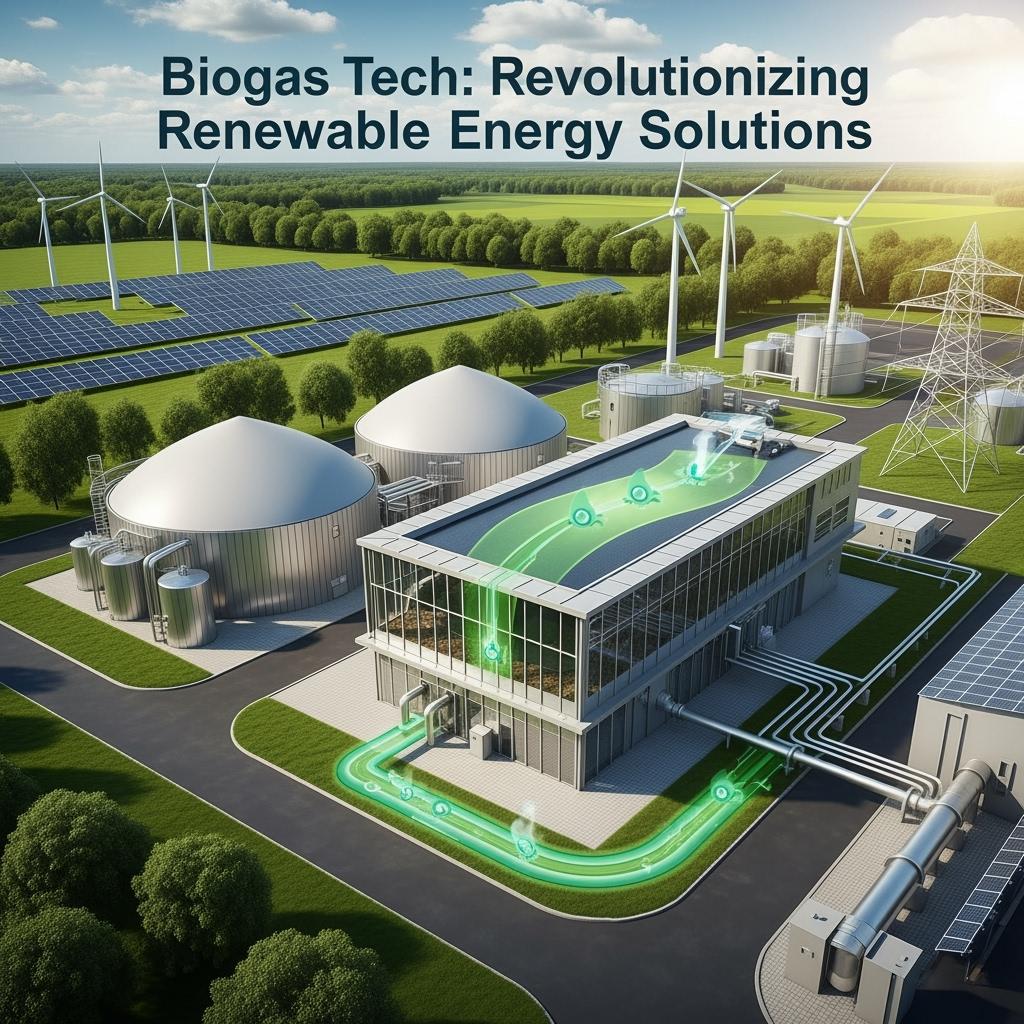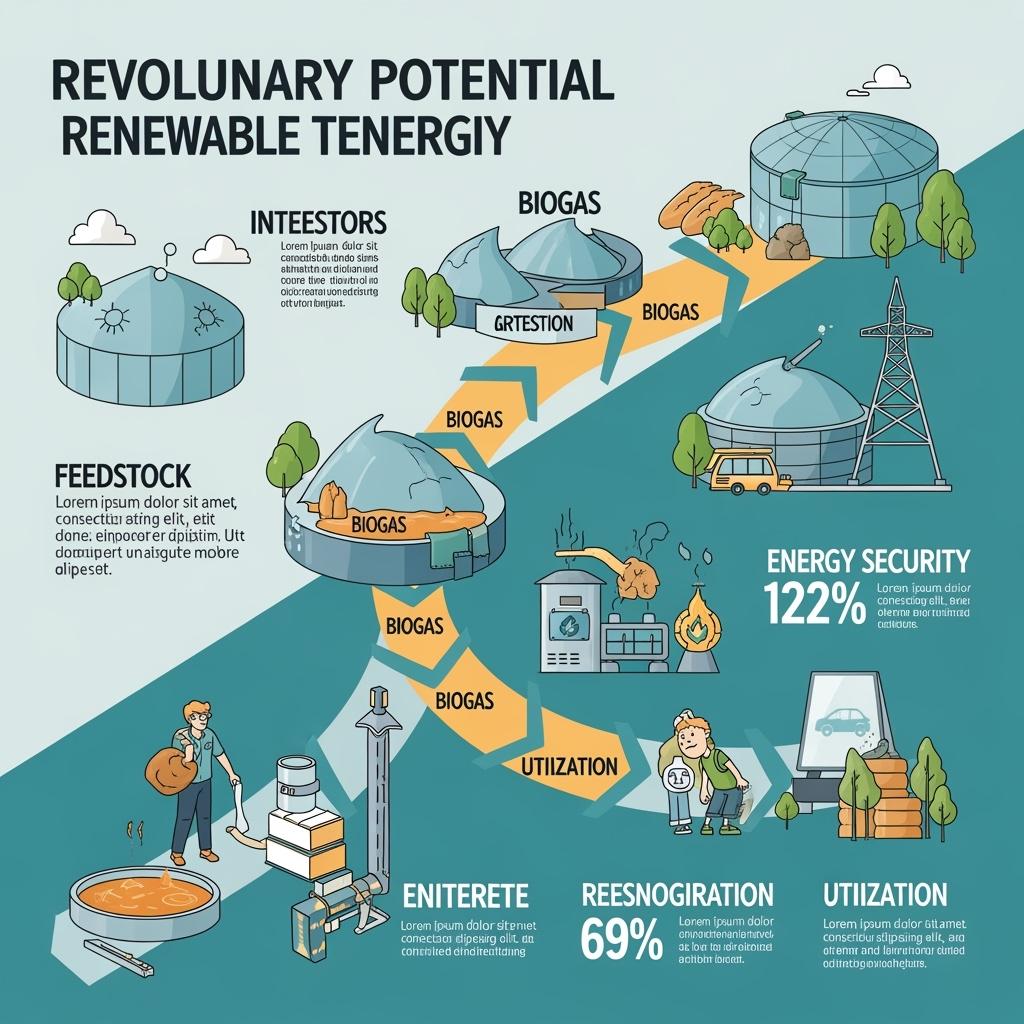Introduction
Biogas Tech: Revolutionizing Renewable Energy Solutions represents a significant advancement in renewable energy solutions, offering a sustainable way to generate energy from organic waste. This cutting-edge technology not only aids in managing waste but also plays a role in lowering greenhouse gas emissions. By utilizing Biogas Tech: Revolutionizing Renewable Energy Solutions, communities can transform their waste into valuable energy, promoting a circular economy.
The potential of biogas tech, revolutionizing renewable energy solutions, is vast, making it an essential component of the global shift towards sustainable energy practices. As we explore the intricacies of biogas tech, we will uncover its workings, benefits, and applications, highlighting why it is a crucial player in the future of energy production.
What is biogas tech?
Biogas Tech is the technology that transforms organic materials like agricultural waste, food leftovers, and sewage into biogas using anaerobic digestion. In this process, microorganisms decompose organic matter without oxygen, leading to the creation of biogas that is rich in methane. This biogas can be used for various applications, including electricity generation, heating, and as a vehicle fuel. Biogas Tech not only provides a renewable energy source but also addresses waste disposal issues, making it a dual-purpose solution.
How Biogas Tech Works
The process of biogas tech involves several key steps:
1. Feedstock Collection: Organic waste is collected from various sources, including farms, households, and food processing facilities.
2. Anaerobic Digestion: The collected waste is placed in a digester, where anaerobic bacteria break it down, producing biogas and digestate.
3. Biogas Collection: The biogas generated floats to the surface of the digester and is gathered for utilization.
4. Energy Production: The collected biogas can be burned to generate electricity, used for heating, or upgraded to biomethane for use in vehicles.
5. Digestate Management: The leftover digestate can serve as a fertilizer packed with nutrients, completing the cycle in waste management.
Benefits of Biogas Tech
Biogas Tech offers numerous advantages, including
• Renewable Energy Source: It offers a lasting option instead of fossil fuels.
• Waste Reduction: It helps in managing organic waste effectively.
• Greenhouse Gas Reduction: It lowers methane emissions from landfills.
• Nutrient Recycling: The digestate can enrich soil, promoting sustainable agriculture.
• Energy Independence: It allows communities to produce their own energy, reducing reliance on external sources.
Applications of Biogas Tech
Biogas Tech finds applications in various sectors:
• Agriculture: Farmers use biogas systems to manage waste and generate energy for their operations.
• Municipal Waste Management: Cities implement biogas plants to process organic waste and produce energy.
• Transportation: Upgraded biogas can serve as a renewable fuel for vehicles.
• Industrial Use: Industries utilize biogas for heating and electricity, reducing their carbon footprint.
Challenges and Considerations
While biogas tech presents many benefits, it also faces challenges:
• Initial Investment: Setting up biogas systems can require significant capital.
• Regulatory Hurdles: Navigating regulations can be complex and time-consuming.
• Public Awareness: Educating communities about the benefits of biogas is essential for adoption.
• Feedstock Availability: Consistent access to organic waste is crucial for operational success.
Conclusion
Biogas Tech stands at the forefront of renewable energy innovation, offering a sustainable solution to energy production and waste management. By converting organic waste into valuable energy, Biogas Tech not only addresses environmental concerns but also promotes economic growth and energy independence. As communities and industries increasingly recognize the importance of sustainable practices, Biogas Tech will play a vital role in shaping a greener future.
Recommendation
To explore the potential of biogas tech in your community, consider the following steps:
1. Research Local Initiatives: Look for existing biogas projects in your area to understand their impact.
2. Engage with Stakeholders: Connect with local governments, farmers, and businesses to discuss potential collaborations.
3. Educate Yourself and Others: Share information about the benefits of biogas with your community to foster interest and support.
4. Explore Funding Opportunities: Investigate grants and incentives available for renewable energy projects to help offset initial costs.
Frequently Asked Questions
What is biogas made from?
Biogas mainly comes from organic stuff such as food scraps, farm leftovers, and sewage.
How is biogas used?
Biogas can be utilized for producing electricity, providing heat, and serving as a renewable fuel for vehicles.
Is biogas safe to use?
Yes, biogas is safe when properly managed and used in accordance with regulations.



